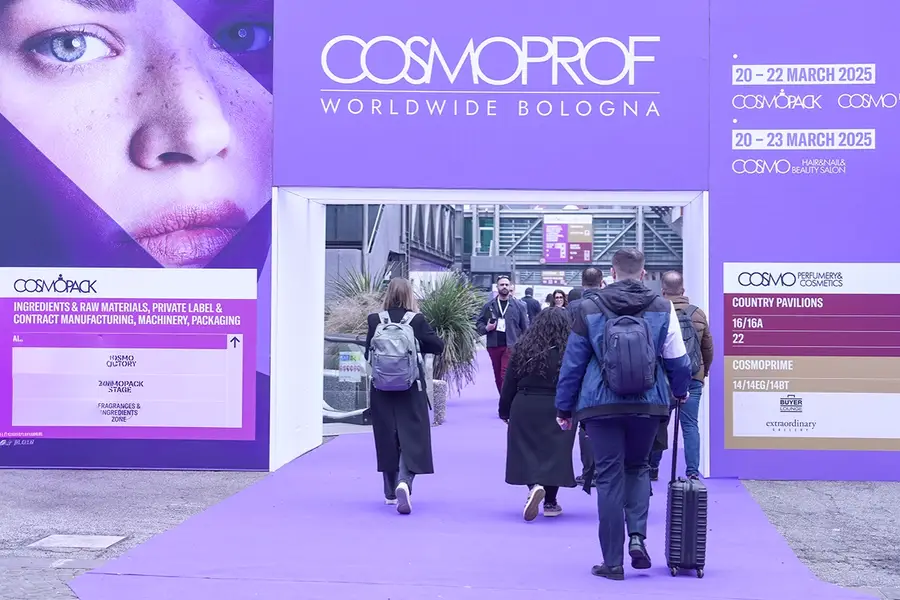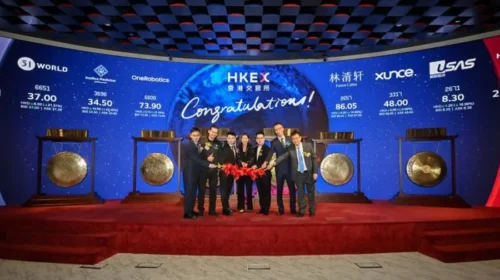Can Proya export its story to become a global makeup artist?

China’s leading cosmetics maker is seeking a second listing in Hong Kong, aiming to boost its overseas expansion as its top-line revenue growth slows
Key Takeaways:
- Proya is exploring a Hong Kong IPO to complement its existing listing in Shanghai, seeking capital for its push to become a top 10 global cosmetics player
- Despite its big aspirations, growth for the company’s core skincare products has slowed this year after five years of strong gains
By Edith Terry
Proya Cosmetics Co. Ltd. (603605.SS) achieved a major feat in 2024, becoming the first Chinese cosmetics company to log sales of over 10 billion yuan ($1.4 billion). That milestone represented an important advance in the company’s 10-year plan to become one of the world’s top 10 cosmetics companies, which would require annual revenue of 50 billion yuan, according to founder and Chairman Hou Juncheng.
But Proya’s recently released midyear results for the first half of 2025 seemed to dim those chances, showing slowing revenue growth, even as the company disclosed it may complement its current Shanghai listing with a new Hong Kong IPO to raise funds to boost its global visibility. The market was squarely focused on the slowing growth, with investors driving the company’s shares down by more than 10% over the next two weeks.
A second listing for Proya would follow a recent trend that has seen many firms already listed on China’s domestic stock markets in Shanghai and Shenzhen make new IPOs targeting Hong Kong’s more international investor pool. Proya’s story has proven quite lucrative for investors who bought into its original Shanghai listing in 2017, which raised 767 million yuan. The shares have risen by five times since then.
Aiming to take its story global, Proya established a European R&D center in Paris last year. Hou told shareholders in December that he plans “to acquire some European brands with history and technology,” targeting deals worth up to $500 million in the skincare and fragrance sectors.
“The Hong Kong listing will not only enable us to reach global investors more efficiently and convey our brand value, but also accelerate the internationalization of our multi-brand portfolio,” the company said on its English-language LinkedIn page. “It will further help us attract core consumers and quality partners across the Asia-Pacific region, supporting the rapid expansion of our overseas business.”
Proya’s current market cap stands at more than 32 billion yuan, suggesting a potential Hong Kong IPO could raise hundreds of millions of dollars.
In 2024, Proya recorded a sixth consecutive year of double-digit revenue growth with 10.8 billion yuan for the year, up 21% from 2023. Its net profit for the year rose by an even stronger 30% to 1.6 billion yuan.
Nearly all the gains were from its domestic business, at a time when consumers were becoming more careful with their money as China’s economy slowed. Last year, just 140.6 million yuan, or 1.3% of Proya’s revenue, came from Hong Kong and overseas markets, though the figure was up 69% year over year. “We will continue to explore and test the waters, deepening our presence in the Japanese and Southeast Asian markets, refining our products while gradually penetrating offline channels,” the company said at an event last December.
Proya got its start in 2006 by targeting China’s lower-tier cities, using a digital-first strategy and avoiding direct competition with more prestigious international brands. It was the first Chinese cosmetics company to open a flagship store on Pinduoduo, the e-commerce platform of choice for price-sensitive consumers, and it developed a portfolio of sister brands alongside its core Proya skincare products.
Global rivals
But competing with the likes of France’s L’Oréal (OR.PA), Spain’s Puig (PUIG.MC) and Japan’s Shiseido (4911.T) could be a tall order, not to mention more up-and-coming domestic rivals, after the Proya’s half-year earnings showed the company might be past its prime. The report contained warning signs, including sharp slowdowns in both revenue and profit growth, as well as declining revenue for its core Proya skincare product line.
The company’s first-half revenue of 5.36 billion yuan was up just 7.2% year-on-year. Its net profit of 799 million yuan was up by a more respectable 13.8%, but still far slower than past growth rates. Revenue for its Proya-brand products, which account for 74% of the total, fell by 0.08% year-over-year, to 3.98 billion yuan, representing the first decline in five years. Meantime, the company’s sales expenses rose by 13.64% to 2.66 billion yuan, while R&D costs were flat, a concern to some analysts in a domestic market increasingly driven by the rollout of new products with therapeutic benefits and targeted at specific niches.
While Proya may have its sights set on the global cosmetics market, it might do well to pay more attention to a home market where it faces growing pressure from domestic rivals. Competitors Mao Geping Cosmetics (1318.HK) and Shanghai Chicmax (2145.HK) both recorded double-digit revenue and profit growth in the first six months of the year, including 31.3% revenue growth to 2.58 billion yuan for the former and 17.3% to 4.1 billion yuan for the latter.
Mao Geping has emphasized experiential offline marketing, with counters in 120 cities nationwide and more than 3,000 beauty consultants. In contrast, Proya’s revenue is almost entirely from online sales, which make up 96% of its total. Chicmax, with its Han Shu skincare brand, has pulled away from using influencers to focus more on its own messaging on Douyin, the Chinese counterpart of TikTok.
As the market leader, Proya still has some cards to play to keep up with its faster-growing rivals. Among those are its newer brands like Japanese skincare brand Off & Relax, which it bought in 2021. Off & Relax’s revenue grew by 103% to 279 million yuan in the first half of this year. Insbaha, another Proya brand “committed to breaking away from mainstream narratives,” also saw strong revenue growth of 80% to 97 million yuan.
Analysts were mixed on Proya after the midyear report. Jeffries downgraded its rating on the company from “buy” to “hold,” and reduced its price target from 115 yuan to 102 yuan, while Citic Securities commended the company for its “new product echelon” and cost controls. China Merchant Securities expects the company to continue posting double-digit profit growth, but just barely, forecasting growth rates of 12%, 13% and 10% for 2025 to 2027, while maintaining its ‘highly recommended” rating.
Proya’s Shanghai-listed stock currently trades at a price to earnings (P/E) ratio of about 20, which looks reasonable, but is still far lower than the 84 for Mao Geping, 39 for Chicmax and 35 for L’Oréal.
Despite any global aspirations that Proya and its rivals may harbor, Chinese cosmetics exports are still relatively small. In the first half of 2025 they rose 12% year-on-year to 18.7 billion yuan, mostly to the U.S., Britain, Indonesia, the Netherlands and Japan.
The Chinese companies should have an advantage in Southeast Asia, where they can take advantage of similar payment infrastructure and consumer shopping habits. According to Euromonitor, Chinese mass color cosmetics grew by an annual rate of 70% between 2019 and 2024, while mass skincare and facial care brands grew 115% and 111%, respectively, over that period.
To subscribe to Bamboo Works weekly free newsletter, click here





